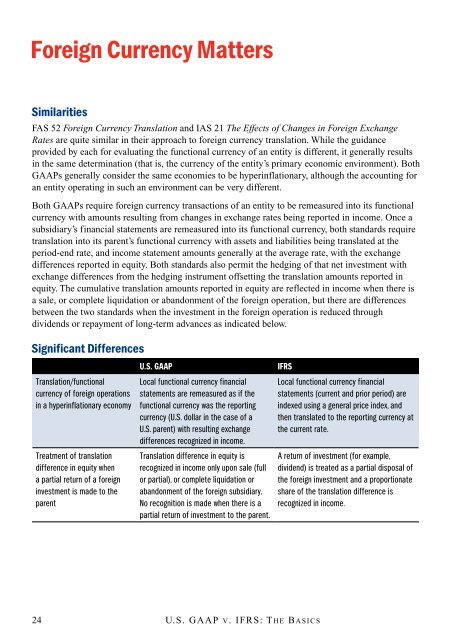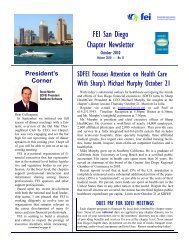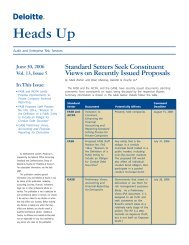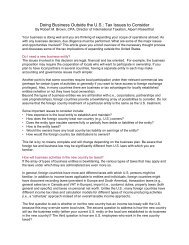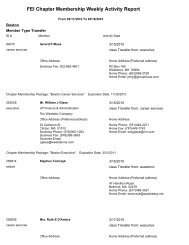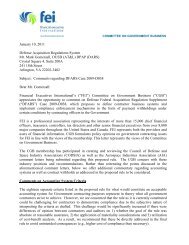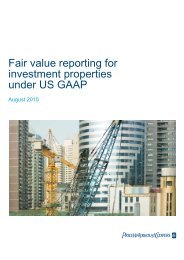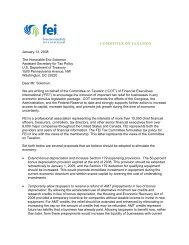U.S. GAAP v. IFRS: The Basics - Financial Executives International
U.S. GAAP v. IFRS: The Basics - Financial Executives International
U.S. GAAP v. IFRS: The Basics - Financial Executives International
You also want an ePaper? Increase the reach of your titles
YUMPU automatically turns print PDFs into web optimized ePapers that Google loves.
Foreign Currency Matters<br />
Similarities<br />
FAS 52 Foreign Currency Translation and IAS 21 <strong>The</strong> Effects of Changes in Foreign Exchange<br />
Rates are quite similar in their approach to foreign currency translation. While the guidance<br />
provided by each for evaluating the functional currency of an entity is different, it generally results<br />
in the same determination (that is, the currency of the entity’s primary economic environment). Both<br />
<strong>GAAP</strong>s generally consider the same economies to be hyperinflationary, although the accounting for<br />
an entity operating in such an environment can be very different.<br />
Both <strong>GAAP</strong>s require foreign currency transactions of an entity to be remeasured into its functional<br />
currency with amounts resulting from changes in exchange rates being reported in income. Once a<br />
subsidiary’s financial statements are remeasured into its functional currency, both standards require<br />
translation into its parent’s functional currency with assets and liabilities being translated at the<br />
period-end rate, and income statement amounts generally at the average rate, with the exchange<br />
differences reported in equity. Both standards also permit the hedging of that net investment with<br />
exchange differences from the hedging instrument offsetting the translation amounts reported in<br />
equity. <strong>The</strong> cumulative translation amounts reported in equity are reflected in income when there is<br />
a sale, or complete liquidation or abandonment of the foreign operation, but there are differences<br />
between the two standards when the investment in the foreign operation is reduced through<br />
dividends or repayment of long-term advances as indicated below.<br />
Significant Differences<br />
Translation/functional<br />
currency of foreign operations<br />
in a hyperinflationary economy<br />
Treatment of translation<br />
difference in equity when<br />
a partial return of a foreign<br />
investment is made to the<br />
parent<br />
U.S. <strong>GAAP</strong> <strong>IFRS</strong><br />
Local functional currency financial<br />
statements are remeasured as if the<br />
functional currency was the reporting<br />
currency (U.S. dollar in the case of a<br />
U.S. parent) with resulting exchange<br />
differences recognized in income.<br />
Translation difference in equity is<br />
recognized in income only upon sale (full<br />
or partial), or complete liquidation or<br />
abandonment of the foreign subsidiary.<br />
No recognition is made when there is a<br />
partial return of investment to the parent.<br />
24 u.s. gaaP v. iFrs: t h E <strong>Basics</strong><br />
Local functional currency financial<br />
statements (current and prior period) are<br />
indexed using a general price index, and<br />
then translated to the reporting currency at<br />
the current rate.<br />
A return of investment (for example,<br />
dividend) is treated as a partial disposal of<br />
the foreign investment and a proportionate<br />
share of the translation difference is<br />
recognized in income.


